According to reviews, women consider removing blood vessels on the face with a laser as the only solution if rosacea is advanced and external remedies do not help. This method is modern. It restores blood flow in the layers of the epidermis and improves the appearance of the skin. The procedure is performed with a laser in beauty salons and clinics. Painless. Almost no side effects. The device intuitively identifies injured dermal tissues and acts only on them.
Couperosis on the face: what is it?
Couperosis (small spider veins on the face) is a disease that appears due to impaired blood microcirculation. This condition occurs when small blood vessels in the skin dilate and become excessively brittle. Most often, this problem is observed on sensitive skin, because it is most susceptible to external irritants and reacts to them with inflammation and redness. Harbingers of rosacea are itching, tingling and burning of the skin, which occurs when there is a temperature change, touching, or washing.
Couperosis on the face (what it is was described above) is most often observed in the forehead and cheeks, in the chin area and on the nose. It manifests itself as redness on the face and a network of dilated capillaries. This skin defect does not cause physical discomfort to its owner, but causes aesthetic discomfort. After all, if rosacea is not treated, it will progress and become noticeable. It can develop into a disease such as rosacea.
Many cosmetologists believe that rosacea occurs more often in people who have a hereditary predisposition to this disease. To reduce the likelihood of this defect occurring, you need to avoid the influence of factors that cause disruption of blood flow and provoke stagnation of blood in the veins. The causes of rosacea include:
- Temperature difference. It has a negative effect on sensitive skin, so this type of dermis must be protected from excessively cold or hot environmental influences.
- Food. Both spicy and hot negatively affect the condition of the skin.
- Smoking. This habit negatively affects the condition of the entire body as a whole and the functioning of the circulatory system in particular. Very often provokes the appearance of rosacea.
- Alcohol. It has a vasodilating effect, which has a bad effect on the condition of the epidermis.
- Ultra-violet rays. They make blood vessels more fragile. Because of this, you need to be careful about prolonged exposure to the sun.
- Coffee and hot chocolate. Stimulates blood circulation in blood vessels. Frequent use causes spider veins to appear on the face.
- Stress. It increases pressure, which disrupts the stable functioning of blood vessels and destroys the walls of capillaries.
Cuperosis is a disease that requires certain treatment. If this pathology is not treated, the skin will age faster, because it will lose a large amount of nutrients. Stops receiving the required amount of oxygen. It will become pale and acquire a grayish tint. Removing blood vessels on the face with a laser will help solve this problem. Reviews about this procedure are mostly positive. Women say that it helps get rid of rosacea in a fairly short time and does not cause negative reactions in the body.
Treatment of spider veins on the face
Many women think about how to remove spider veins on their face. If the disease is at an early stage of development, it can be combated with the help of creams and masks. Their action is aimed at strengthening the walls of blood vessels, toning and nutrition. External agents can remove rosacea, but not completely, but only for a short period of time.
Cosmetologists are currently fighting this disease using modern methods that destroy blood vessels. The procedures do not disrupt blood circulation in the vessels, since when injured capillaries are lost, reserve capillaries are activated. Laser cosmetology centers and beauty salons use the following methods to treat this disease:
- Electrocoagulation. The essence of the procedure is the destruction of the affected vessel, which occurs under the influence of an electrical impulse passing through a very thin needle. Despite the simplicity of the procedure, when treating a large area affected by rosacea, very unsightly needle marks remain on the face. A more gentle type of electrocoagulation is diathermocoagulation. It is carried out using a hair electrode. This treatment method is used no more than once every seven days. First, large and then small vessels on the face are removed. In rare cases, pigment spots and scars appear after the procedure.
- Laser therapy. Treatment is carried out with a laser and only for advanced rosacea. Reviews about the procedure for removing blood vessels on the face with a laser are mostly positive. People say that, despite the fact that this procedure is painful, it gives a good result and helps to remove rosacea for a long time.
- Phototherapy. This method is widely used in cosmetology practice to treat rosacea. During a cosmetic session, the skin is exposed to special pulsed light, the range of which ranges from ultraviolet to infrared radiation. This procedure is good because each type of ray affects a separate problem.
- Ozone therapy. A special oxygen-ozone solution is injected through a microscopic needle. It improves cell functioning and charges them with energy and strength. This approach allows you to remove defects from the face. Is the safest method. After the procedure there are no scars, scars or pigmentation.
Regardless of which method was used to treat rosacea, the results obtained should be maintained with proper skin care. You need to take vitamin C or ascorutin regularly. Use special creams. And most importantly, the main cause of rosacea should be removed.
Since the laser method of removing spider veins on the face is the most common, this is what will be discussed further in the article.
Removal of blood vessels with laser: indications and contraindications
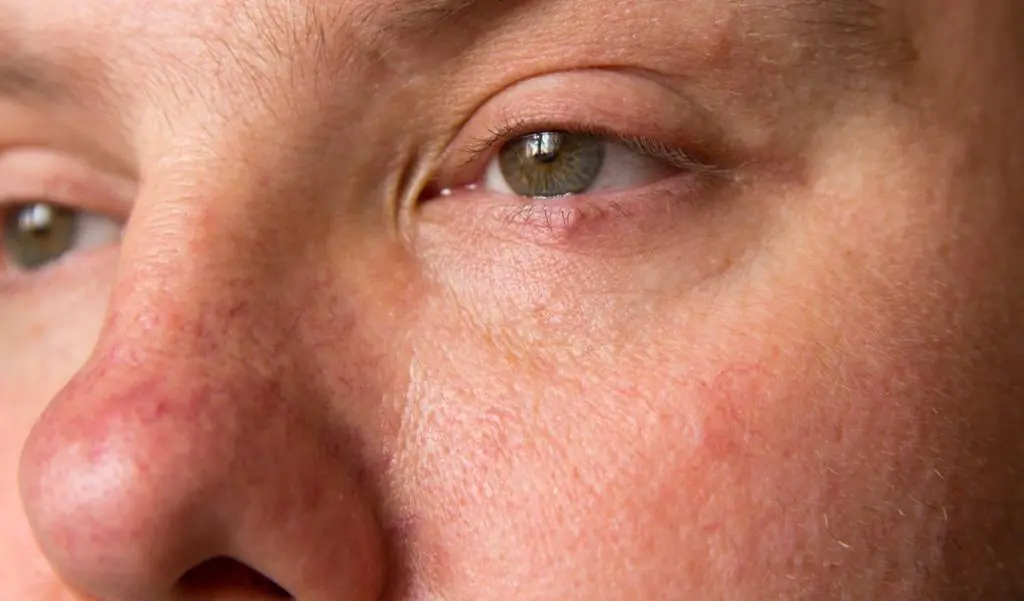
Many women are concerned about the question of how to remove spider veins on the face. This problem can be solved with laser therapy. Indications for the procedure are:
- Spider veins on the skin. This deficiency occurs when capillary vessels dilate.
- Single dilated vessel. The defect is a vessel that is dilated along its entire length. Because of this, a mark resembling a dash is formed on the skin.
- Vascular network on the face. Occurs after peripheral lesions of blood vessels that are located in one area. Most often, this defect forms on the wings of the nose.
- Rosacea. An inflammatory process that occurs in the deep layers of the skin. With this pathology, rosacea and small papules filled with serous fluid are formed. With this disease, the face becomes pink, and with the development of the pathology it acquires a purple tint.
This procedure also allows you to remove various benign vascular formations.
Laser therapy is not suitable for everyone, so you should consult your doctor before undergoing this procedure. Laser removal of spider veins on the face has the following contraindications:
- oncological formations;
- diabetes;
- arterial hypertension;
- thyrotoxicosis;
- diseases of the cardiovascular system;
- diseases accompanied by circulatory disorders, blood clotting;
- tendency to bleed.
- systemic lupus erythematosus;
- diffuse connective tissue pathologies;
- tuberculosis;
- mental illness in a severe stage of development;
- fever, infectious diseases in the acute stage;
- pathologies of the skin located in the area of the operation;
- period of bearing a child;
- lactation;
- epilepsy;
- predisposition to the formation of rough (keloid) scars.
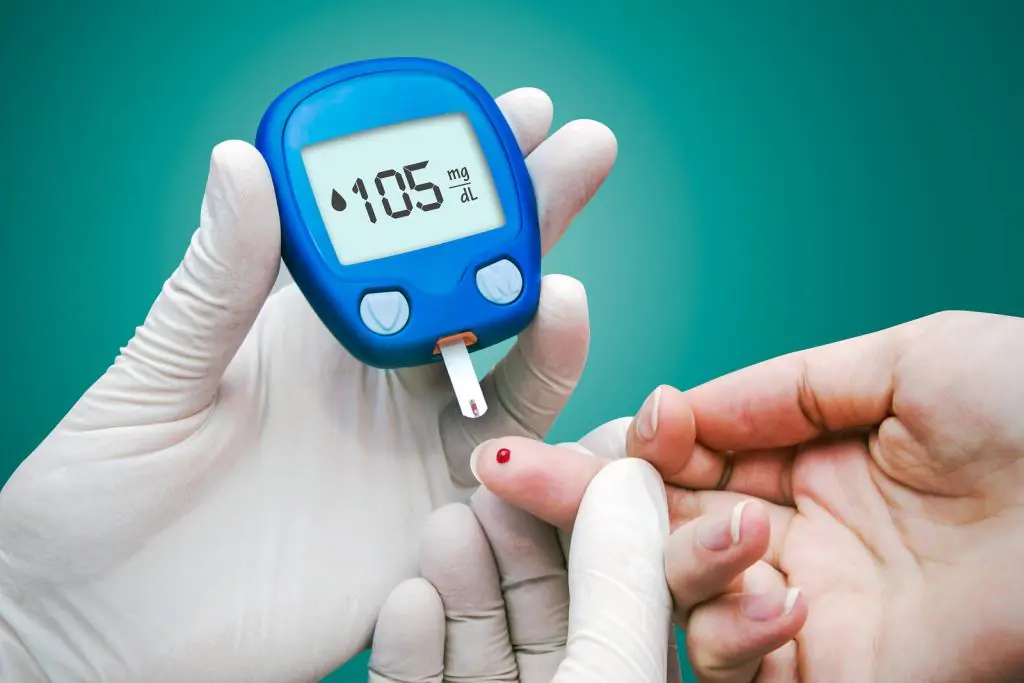
In all of the above cases, you need to abandon laser therapy and choose another method for removing rosacea on the face.
Preparation for the procedure
As follows from the reviews, many women consider laser removal of facial vessels to be a good way to combat rosacea. They say that the procedure is painful, but the sensations are tolerable, and the result is visible immediately.
Laser therapy does not require special preparation. The only thing is that before the procedure, the cosmetologist asks you not to use peeling, not to go to the solarium, avoid prolonged exposure to the sun, and not to take vitamin A orally.
If thermal or chemical facial procedures have previously been performed, then the interval between them and laser exposure should be at least 14 days.
Laser coagulation is carried out in the autumn-winter period, and can be done in the spring. During this period, the risk of adverse reactions of the body is minimized. It is not recommended to resort to this procedure in the summer.
Description of the procedure
Many people suffering from rosacea are concerned about how to get rid of spider veins on the face. In this case, experts advise resorting to laser coagulation. This technique is based on the ability of human tissues and skin cells to absorb light rays. The laser beam affects different skin defects differently. In the treatment of rosacea, rays of yellow and green wavelengths are used.
Two types of lasers are used in the treatment of rosacea:
- Neodymium. Modern device. Universal. Can be used for various locations of dilated small vessels or capillary mesh. The device emits radiation evenly. Equipped with a cooling system that prevents burns on the dermis and reduces pain during the procedure. The result after its use is visible immediately.
- Diode. It is used in the presence of small dilated venous vessels. The effect after its use is not immediately visible. It will take more than one session to achieve results.
The procedure for removing rosacea on the face with a laser is carried out without anesthesia. Sometimes a numbing cream may be applied. Apply it half an hour before the session.
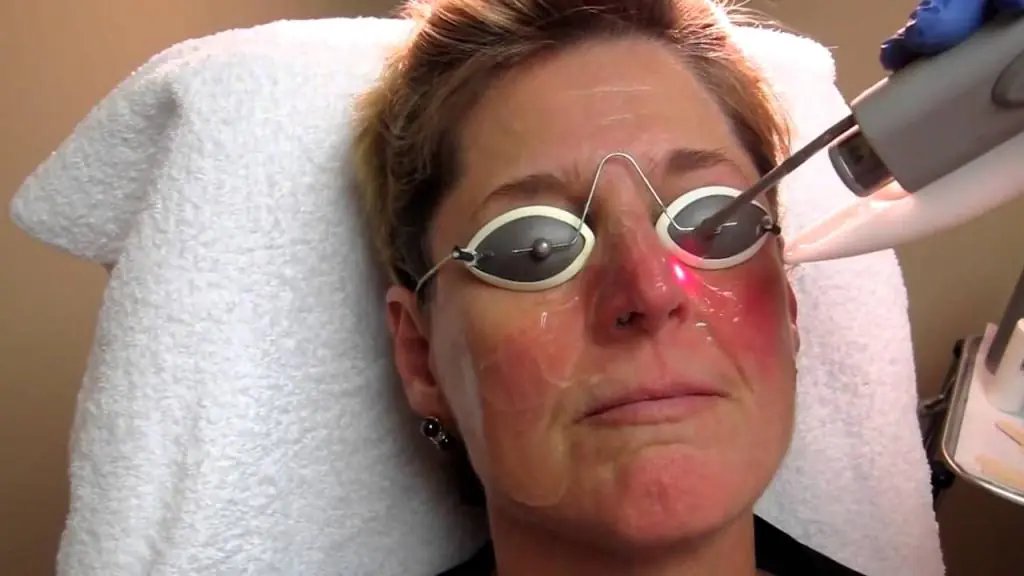
The patient lies down in a special chair. His eyes are protected by glasses. Healthy tissues are treated with a cooling spray. During the session, a cold stream of air is blown onto the patient, which is pumped by a pump. Next, the doctor begins to treat the affected area with a laser. The injured vessel is heated gradually. The vessel is considered sealed when its color turns purple and a blood clot appears on it. After this, the procedure is stopped.
The session lasts 15-30 minutes. During the procedure, the patient may feel a slight burning and tingling sensation. If necessary, laser therapy is repeated after a week.
Recovery after the procedure
After the laser procedure, redness occurs at the site of treatment of the skin. Patients say it goes away in 1-2 days. Cosmetologists recommend not to wet the treatment area for three days. After removing spider veins with a laser, the skin is cleansed with a chlorhexidine solution. This disinfects the surface of the skin and protects it from infection.
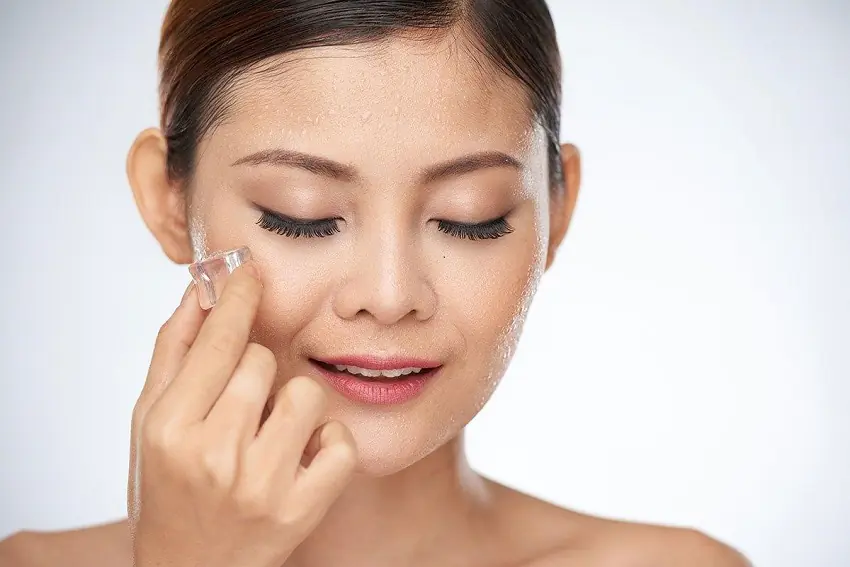
Immediately after laser therapy, ice is applied to the injured area. It is prohibited to use cosmetics during the day. Antibacterial ointment is applied for several days after using the laser. A ban on decorative cosmetics and alcohol-containing facial care products is being introduced for three days. It is not recommended to drink alcohol for three days. For two weeks you should refrain from active physical activity, exposure to the sun and visiting the pool. You should not use scrubs or peels for about 14 days.
After removal of rosacea, you cannot visit the bathhouse or sauna for 60 days. During this period, it is better to protect the skin from sudden temperature changes. You should regularly moisturize and nourish the skin with creams. They will soothe the irritated dermis and help it recover.
By adhering to the above recommendations, you can protect yourself from the development of side effects that are possible after the procedure.
Negative consequences of removing rosacea
How to get rid of spider veins on the face was described above. Most often, cosmetologists offer laser therapy to solve this problem. Negative consequences of laser removal of blood vessels on the face are not always observed. They appear in the form of redness and swelling. Sometimes crusts appear that must not be peeled off or wetted with water. To make them disappear faster, use ointments “Solcoseryl”, “Panthenol”, “Bepanten”. Very rarely, this procedure can cause a burn, hematoma, scarring or bruising. Most often, side effects go away within a few days and do not cause any particular problems.

After removing blood vessels on the face with a laser, the capillary mesh may appear again after some time. To prevent this from happening, you need to wipe your face only with a soft towel. It is also recommended to remove sweet, spicy and fatty foods from the diet, and limit the consumption of alcohol and coffee. From time to time you need to resort to salon procedures, the action of which is aimed at improving the functioning of capillaries.
To avoid rosacea, you should not choose scrubs and peels for dermis care that can injure the skin. It is necessary to reduce the time spent in the sun, and sunbathe only after applying products to the skin that reduce the negative effects of ultraviolet rays. Excess weight negatively affects the condition of blood vessels. It needs to be stabilized.
Removal of spider veins on the face: price
The cost of laser therapy varies depending on the length of the vessel and its size. On average in Russia, the price for removing a vessel up to 1 cm2 ranges from 700 to 1600 rubles; for getting rid of a spider vein measuring 1 cm2 or more you will have to pay from 800 to 5500 rubles.
At the Laser Cosmetology Center in Moscow, they charge 4.5 thousand rubles for one procedure for removing rosacea in the cheek area. One session in the chin area has the same cost. The price of one treatment of the wings of the nose varies around 4,000 rubles. Removing 1 cm 2 of a vessel costs 1000 rubles, 0.5 cm 2 – 500 rubles.
Patient reviews
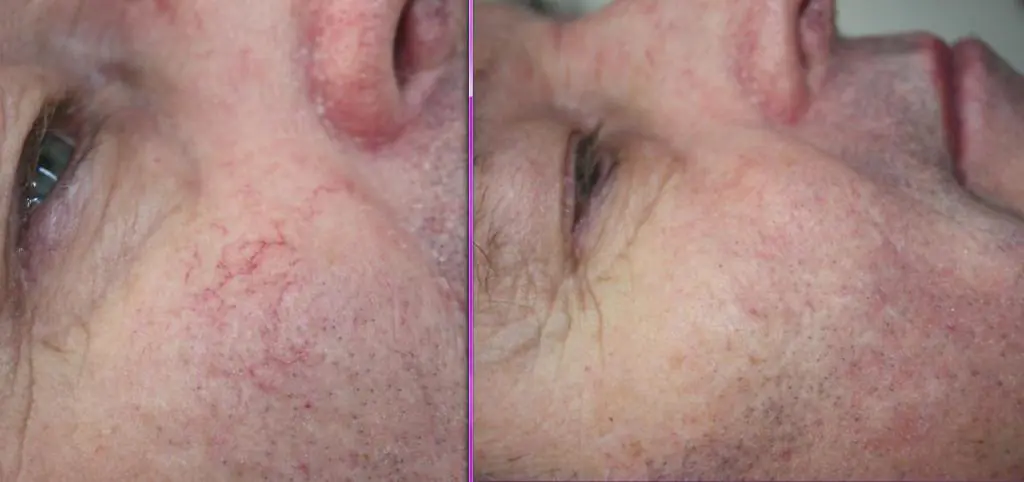
Removal of vascular tissue on the face has mostly positive reviews. People note that the procedure gives noticeable results. Well tolerated. Only a small proportion of people experience minor pain during the session. According to patients, at first, immediately after the procedure, redness is observed. But it goes away within a few hours. If there are not many blood vessels on the face, then you can get rid of them in one session. If rosacea is advanced, another procedure may be necessary.
There are, of course, negative reviews. Some women note that this procedure is extremely unpleasant. Suitable for removing small vessels only. In their opinion, when rosacea is severe, laser therapy will not produce results. There are also people who noted that the procedure caused side effects. They developed scabs and scars on their faces. It took a long time for them to go away, and these patients needed additional treatment to regain a normal appearance.
Some people say that the laser only gives a temporary effect, and after the procedure, spider veins appear again after a certain time.
In general, those people who turned to an experienced doctor for help and subsequently followed all the cosmetologist’s recommendations were satisfied with the procedure.
Creams for rosacea

If spider veins occur, at the very beginning of the development of the disease, you can try to cure the disease with creams. Which cream is best for rosacea? The following products are recognized as the best remedies for spider veins on the face:
- Avene Diroseal. Contains active ingredients: hesperidin methyl chalcone and dekatron sulfan. Stimulates cell regeneration processes. Has a thick texture. It moisturizes the epidermis well and makes it more elastic. Costs about 1 thousand rubles.
- Cream "Bark". It is a capillary protector for dermis prone to rosacea. It contains green tea extract, rutin, ascorbic acid, verbena extract. Cream "Bark" has a positive effect on the metabolic processes taking place in the epidermis. Has pronounced moisturizing properties. It costs around 400 rubles.
- Antigun Plus. The cream has the lightest structure. Quickly absorbed. Suitable for any skin type, including the most sensitive. Stimulates blood microcirculation. Significantly reduces the degree of redness and the size of vascular changes. Its price fluctuates around 1,500 rubles.
- "Doctor Tuffy" Strengthens blood vessels well. Reduces irritation and degree of redness. Contains vegetable oils: shea butter, avocado, calendula, immortelle. It contains vitamin C and aloe, chamomile, marshmallow extract. The product is applied 2-3 times a day. The course of treatment is 3 months. Price - 400 rubles.
- "Uriage". This product contains ginseng extract and substances that moisturize and soothe the skin. The cream helps protect the skin from the negative effects of ultraviolet rays. Strengthens capillaries. Prevents further development of rosacea. Gives stable and long-lasting results. Costs about 800 rubles.
- "Stop rosacea." This cream is enriched with panthenol. Contains shea butter, as well as lipid and vitamin complexes. It contains UV filters. The product not only strengthens capillaries, but also soothes the skin. Restores blood microcirculation. Gives a quick and lasting effect. Costs about 600 rubles.
Properly selected cosmetics will help remove rosacea without resorting to laser therapy. With their help, you can completely get rid of the capillary network and significantly improve the condition of the skin. Strengthen capillaries. If the skin is prone to rosacea, then the above products should be used at least once a month.
Fotona is a laser technology that is unique in its effectiveness; it is an unprecedented precision of laser operation, guaranteeing absolute safety of the procedures performed, minimal recovery time and excellent aesthetic results, unavailable to any other laser system in the world.
FT technology is ideal for treating aesthetic problems such as:
- Skin aging;
- Acne;
- Pigmentation;
- Scarring;
- Treatment of snoring and sleep disorders
- Unwanted hair;
- Unsuccessful or unwanted permanent/tattoos;
- Neoplasms;
- Stretch marks;
- Aesthetic gynecology (vaginal constriction and stress urinary incontinence).
LASER TECHNOLOGIES IN OUR CLINIC
An innovative non-surgical method for treating snoring using the Fotona laser system! ⠀
⠀
Fotona has developed NightLase technology, which uses an erbium laser to treat breathing-related sleep disorders, particularly snoring and sleep apnea. ⠀
The procedure is the latest non-invasive treatment method based on photothermal compaction and compression of the uvula, soft palate and surrounding tissues in the oropharyngeal mucosa. ⠀
⠀
How does the method work?
When the laser is activated, thermal energy is accumulated from the mucosal tissue, causing collagen remodeling and subsequent contraction of the mucosal tissue in the oropharynx.
No anesthesia or medication is required before the procedure.
After the procedure, the patient can immediately return to his daily life. No special therapy or special care is required. ⠀
⠀
- Deep FT face/eye rejuvenation
- 4D – rejuvenation using the Fotona device— a course procedure that includes the step-by-step construction of a new collagen framework of the skin and allows you to obtain a long-term rejuvenation effect with a minimal recovery period.
Indications: unclear oval face, skin density and porosity, small and medium wrinkles, dull complexion, photoaging.
Result: the surface of the skin becomes firmer, more elastic, its structure and color improve, the oval of the face becomes clearer, wrinkles are smoothed out, and a visible effect of skin rejuvenation and lifting is achieved. - FT face/body resurfacing
- Age: no restrictions
Indications: uneven relief, skin density and porosity, all types of wrinkles, dull complexion, unclear oval face, scars, post-acne scars.
Description: an effective method of smoothing, rejuvenating and tightening the skin with long-term preservation of the achieved results. This is the optimal method for those who want to significantly rejuvenate their facial skin without resorting to the help of a plastic surgeon.
Result: the skin is smoothed, wrinkles disappear, the optical properties of the skin improve, and a pronounced lifting effect is achieved.
Recovery period: from 3 to 7 days
Course: one-time procedure
Effect: up to 3 years - Cold FT peeling
Description: a procedure for instantly smoothing the skin surface and achieving the effect of “velvet” skin.
Result: fine wrinkles disappear, the skin smoothes out, becomes smooth, matte and velvety.
Recovery period: 1-3 days
Course: 1-3 procedures
Effect: instant, lasts up to six months
- Hot FT peeling
Description: the procedure is aimed at smoothing the skin texture, but unlike cold peeling, it also provides a noticeable tightening.
Result: the skin becomes smooth, elastic, velvety and toned, the oval of the face is clearer, fine wrinkles disappear, and deep wrinkles are smoothed out.
Recovery period: up to 5 days
Course: 3 procedures
Effect: instant and increases over 2-3 months - Fractional FT rejuvenation
Age: from 30 years
Indications: skin density and porosity, uneven texture, dull complexion, all types of wrinkles.
Description: an innovative, painless, effective and safe procedure aimed at forming a new collagen framework of the skin and powerful stimulation of rejuvenating processes in the deep layers of the dermis.
Result: the skin becomes firm and elastic, pores narrow, the oval of the face is tightened, the texture and color of the skin is evened out, wrinkles and scars are smoothed out.
Recovery period: up to 2 days.
Course: 2-3 procedures at monthly intervals
Effect: instant, increases over 2-4 months and lasts up to 3-5 years. - Removal of blood vessels using the Fotona laser
The unique FT laser technology will allow you to effectively and painlessly cope with vascular pathologies of any complexity. Removal of blood vessels on any areas of the face and body. Absolute safety of procedures. Instant visible results. No side effects or complications. Removal of vascular pathologies of any complexity and size.
INDICATIONS FOR THE PROCEDURE
- Cuperosis- a vascular disease in which unaesthetic spider veins and networks of dilated capillaries appear on the skin;
- Rosacea – a chronic skin disease, the main symptoms of which are redness of the skin and the formation of tubercles, pustules and other rashes on the face;
- Hemangiomas – birthmarks consisting of spider-like dilated blood vessels of the skin.
Course: 1-2 procedures.
- Acne treatment with Fotona laser
Using the FT technique in the treatment of acne, you can achieve a unique cosmetic and therapeutic effect in the fight against this problem. The pronounced effect is visible immediately after the first procedure. The procedure is effective for all forms of acne, the technique is physiological and safe, and there is no damage to the skin during its implementation. Using this technique, you can not only treat active forms of acne, but also carry out preventive procedures aimed at sterilizing the skin, as well as treat complications, which usually manifest themselves in the form of post-acne scars. The impact of the laser beam smoothes scars, making them softer, more elastic and almost invisible to the eye. In addition, the procedures allow you to restore metabolic processes in the skin, activate the synthesis of new collagen fibers and exfoliate old dead cells.
- Laser treatment of acne using the Medio Star Next device
- A low-traumatic technique that allows you to cure acne in a short time, is increasingly popular among clients of beauty salons and cosmetology clinics.
The mechanism of action of the procedure is based on the thermal and photodynamic effects of high-intensity laser radiation on the skin of the human body. Laser beams easily penetrate into the deep layers of the skin and cause their heating, which leads to partial destruction of the glandular epithelium that lines the ducts of the sebaceous glands from the inside, and helps reduce the production of sebum. High temperature has a detrimental effect on the growth and reproduction of Propionibacterium acnes bacteria and destroys their metabolic products - porphyrins, which leads to blocking the main cause of acne development. - Aesthetic gynecology
IncontiLase – a unique laser procedure for the treatment of urinary incontinence at the initial stage and non-surgical vaginal plastic surgery, which is carried out using an erbium laser from Fotona.
- Stress urinary incontinence is the most common form of urinary incontinence in women. Defined as the involuntary loss of urine during coughing, sneezing, or physical exertion such as athletic activity or a sudden change in body position. IncontiLase technology is an erbium laser treatment of the anterior vaginal wall and vestibule in the area of the urethral outlet in a non-ablative thermal mode with a special packet pulse. There is no destruction of the mucous membrane. The immediate reaction of contraction of collagen fibers and acceleration of neocollagenesis lead to tissue tightening and increased elasticity. The treated area gradually shrinks and shrinks, thereby reducing the symptoms of stress urinary incontinence. The procedure for treating urinary incontinence is performed on an outpatient basis, without the use of anesthesia. There is no rehabilitation period. With the use of IncontiLase technology, 72% of patients showed positive results in the treatment of urinary incontinence at the initial stage. Depending on the severity, up to 3 treatment sessions are possible with an interval of 30 days.
- IntimaLase— (vaginoplasty) – an innovative technology of non-surgical vaginal plastic surgery. The Fotona erbium laser allows you to transmit special impulses to the vaginal mucosa and parietal fascia of the pelvis. Laser pulses, without damaging the mucous membrane, provide rapid, effective heating of the submucosal layer. Thermal energy not only effectively improves collagen structure, but also stimulates neocollagenesis. As a result of laser exposure, collagen fibers become shorter and thicker, after which the treated tissue contracts and shrinks. In addition, neocollagenesis processes are launched, as a result of which the treated tissue becomes firm and elastic, vaginal atony is reduced, and the effects of vaginal relaxation syndrome are eliminated. The procedure for non-surgical intimate vaginal plastic surgery using the Fotona laser consists of two treatment sessions with an interval of 15-30 days.
- Hair removal with diode laser MeDiostar NeXT (Germany)
The procedure, based on the effect of light on the skin, allows you to destroy the follicle, but does not cause any harm to the dermis. It is used not only for hair removal with any skin type, but also for the treatment of hirsutism (coarse hair) and hypertrichosis (excessive hair growth).
Hair removal with a diode laser does not lead to the formation of scars and burns. Unlike electrolysis, during which a needle is inserted under the skin, this innovative procedure is safer.
- Laser hair removal with neodymium laserFotona (Slovenia)
The laser beam contains infrared light. Area of application: hair removal of dark hair on dark or tanned skin, as well as removal of rosacea (network of capillaries), treatment of acne and correction of scars.
When using most laser hair removal systems, the effect is achieved by heating the hair shaft due to the absorption of light radiation by the pigments contained in it. The FT laser acts differently; its light is absorbed by actively dividing cells of the hair follicle and destroys them. Also, the effect is on the blood capillary that provides its nutrition.
- Laser removal of low-quality permanent makeup. Laser tattoo removal
Removing botched permanent makeup or unwanted tattoos is now possible without damaging the skin or causing scars. The principle of the laser pigment removal technique is based on the use of the selective photocavitation method. The laser emits a highly focused beam of light that safely passes through the top layer of skin and is absorbed by denser pigment, damaging it. Since the absorption rate of the laser beam is very high, the energy of light absorption by the pigment is converted into thermal energy. A sudden increase in temperature destroys the pigment capsule into tiny particles, which are gradually eliminated from the body by the lymphatic system.
Tattoo removal methods:
- laser drilling with a neodymium laser on a Fatona device;
- tattoo removal with neodymium laser using a Fotona device;
- laser resurfacing using a Fotona machine.
LUMENIS M22 is the latest device for non-surgical correction of spider veins on the legs and body.
- The Nd:Yag laser module of the LUMENIS M22 device effectively solves the problem of venous and capillary networks, hemangiomas, telangiectasia on the body, arms and legs
- The surrounding healthy tissue and skin are NOT DAMAGED, which means the procedure does not cause scar formation and post-traumatic hyperpigmentation.
Contraindications to the procedure
Effect of the procedure
Elimination of capillary and venous networks, hemangiomas, telangiectasia on the body and limbs WITHOUT SKIN DAMAGE AND SCAR FORMATION.
technology and its advantages
Patented Optimal Pulse Technology breaks each laser pulse into a series of identical subpulses with a fixed energy and shape.
This approach leads to the following results:
At the moment of the subpulse, the tissues heat up. During the pause between subpulses, the laps cool down. Thanks to intense surface cooling, these processes occur at different rates in the upper layers of the skin and target areas of the dermis, such as blood vessels and capillaries. Therefore, targeted heating of the walls of blood vessels occurs and their subsequent sclerosis (soldering) WITHOUT DAMAGE TO THE SKIN.
In fused vessels, blood flow stops and the vessels become invisible.
Under the influence of Nd:Yag laser energy, vessels are “soldered together” (sclerosed), blood flow in them stops, and the vessel becomes invisible. The surrounding skin is not damaged.



